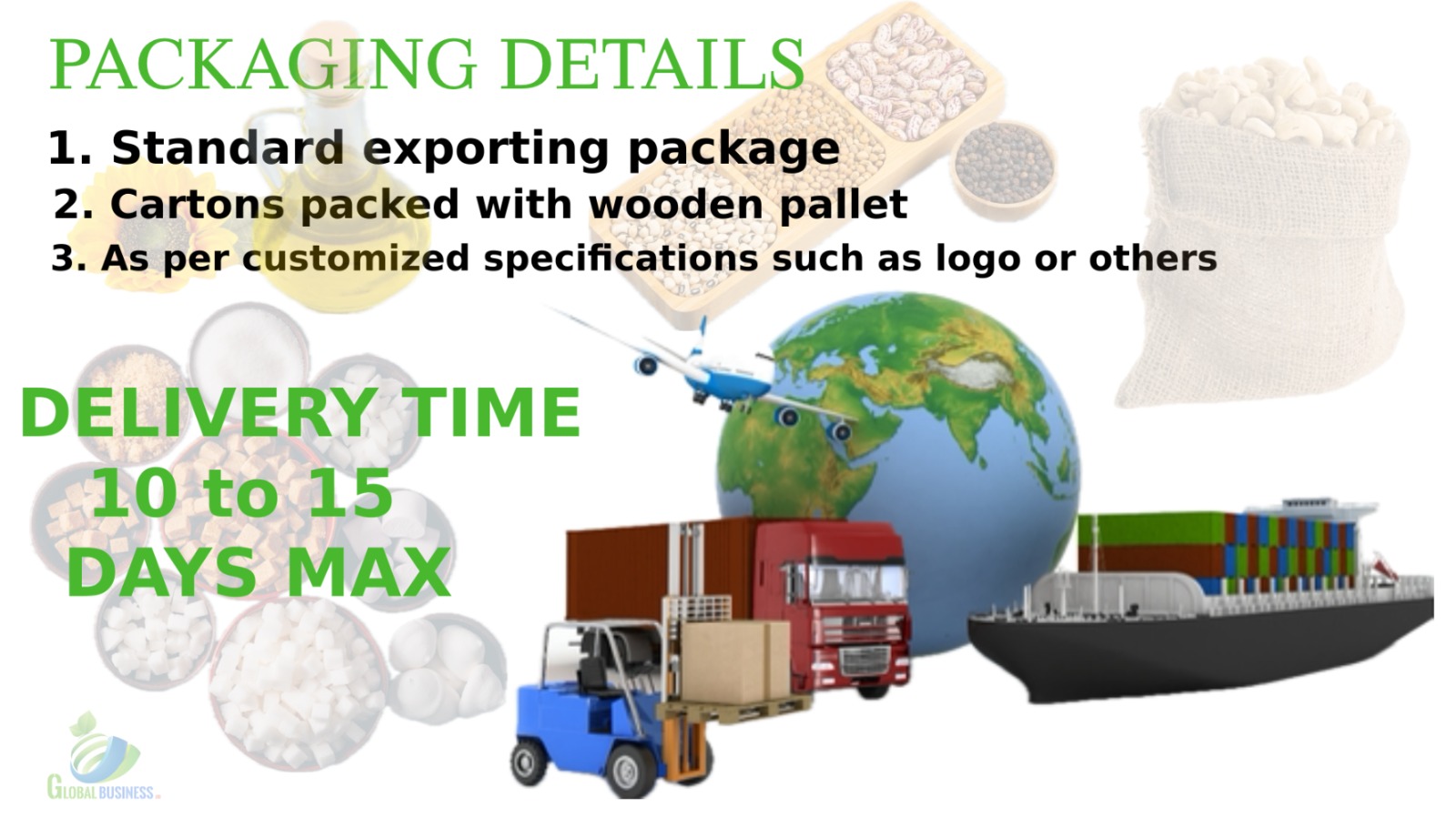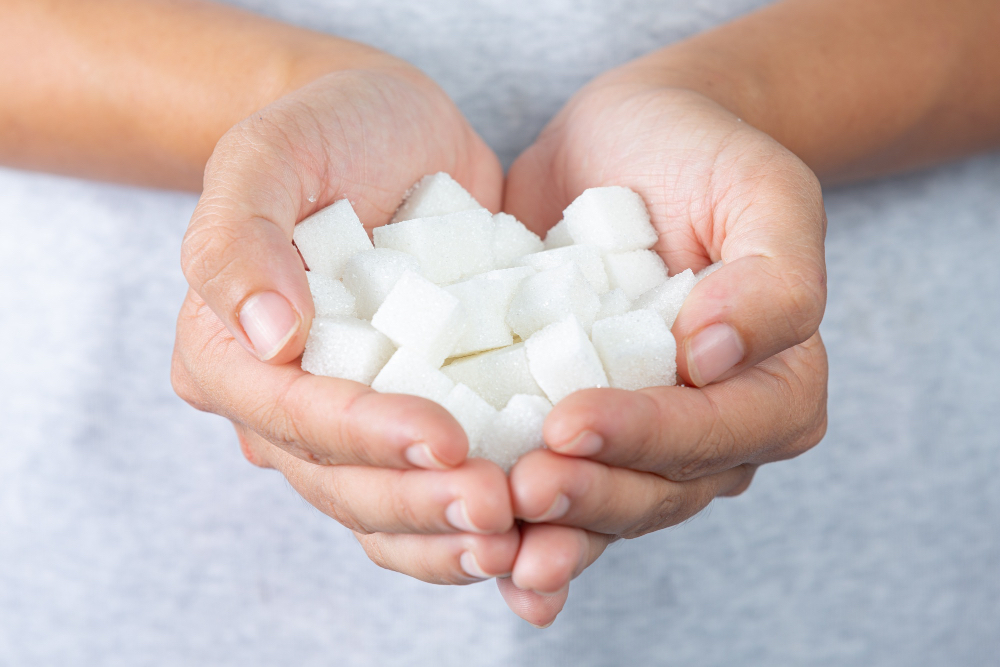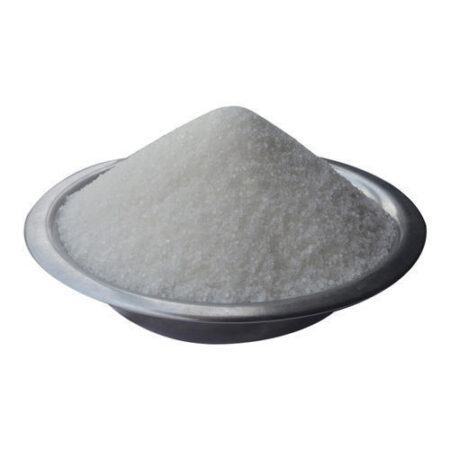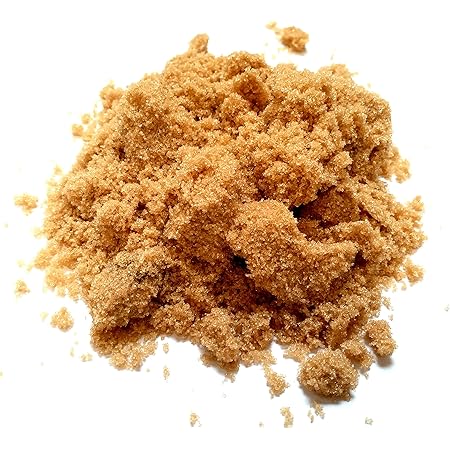
REFINED CANE SUGAR
ICUMSA : 45 RBU.
Fit for Human Consumption.
Polarization : 99,80% min.
Moisture : 0,04% max by weight.
Ash content : 0,04% max by weight.
Solubility : 100% dry/free fine flowing.
Radiation : Normal With in internationally accepted limit.
Crop : Current.
Magnetic particles : 4 mg/kg.
SO2 : 70 mg/kg.
Colour : Sparkling White maximum 45 Icumsa attenuation units (Icumsa method n?. 1978).
Granulation : Fine Standard.
Ash by electrical : 0.04 % Max. (on dry weight basis) Conductivity.
Sulphur Dioxide : 20 mg/kg Min.
Sediments : None.
Smell : Free of any smell.
Reducing Sugar : 0.05% Max by weight.
HPN Staph Aureus : Nil.
Max AS : 1 P.P.M.
Max PS : 2 P.P.M.
Max CU : 3 P.P.M.
Substance : Solid Crystal.

How is white sugar produced?
The production of industrial sugar depends on the raw material used. Sugarcane is harvested six to twelve months after planting. In most cases, farmers harvest the crop by hand. Alternatively, special harvesting machines alleviate the difficult work. After transport to a sugar factory, rollers crush the sugarcane. The raw juice is then created in boilers. This contains undesired components like soil, fibres and other residues. Lime and carbon dioxide are added to clean and separate sugar from non-sugar substances. In the next step, the water content of the thin juice is reduced through evaporation. The resulting thick juice has an increased sugar content of up to 65 percent. To accelerate crystallisation, seed crystals are added. As soon as the ratio of sugar and syrup is balanced, centrifuges separate the two elements. This process is called refining and is repeated up to three times. The syrup – or cane molasses – also contains a significant amount of sugar after this procedure. However, current technology cannot remove it from the syrup. Due to the impact of heat during production, most of the nutrients in the raw material are lost. The last step involves drying the sugar, which is then temporarily stored in silos or immediately packed in Big Bags and sacks. Wholesale Icumsa suger
White Icumsa 45
The production of white sugar from sugarbeet starts 26 to 30 weeks after planting, once the plant is ready to harvest. Cultivation typically occurs in temperate climatic zones, where the harvesting season runs from mid-September to mid-December. After harvesting, sugarbeet is initially shredded. This results in sugarbeet chips as an intermediate product. The raw juice is extracted by adding hot water and applying diffusion processes. The subsequent steps are the same as for the production of industrial sugar from sugarcane.


The wide variety of sugar types
White sugar is conventionally produced from sugarbeet and sugarcane. Both plants contain useful quantities of sucrose, which is extracted and dried. The key difference between the two materials lies in where the plants are cultivated. While sugarcane grows in tropical regions, sugarbeet is prevalent in temperate climatic zones. Products made from sugarcane are also called cane sugar and they account for 74 percent of sugar traded worldwide. Cane sugar should not be confused with raw sugar, which is not completely refined and is characterised by a brown colour. Wholesale Icumsa suger
Sugar cubes | Organic icing sugar | Sugar cubes |
Organic cane sugar | Organic icing sugar | Organic liquid sugar |
Demeter sugar | Organic sugar cubes | Organic beet sugar |
Muscovado sugar | Coconut sugar | Fairtrade sugar |
Organic invert sugar | Invert sugar | Organic coconut sugar |
Cane sugar | Organic panela sugar | Naturland sugar |

Wholesale Icumsa suger
Whole cane sugar | Raw cane sugar | |
Raw material: | Sugarcane | Sugarcane |
Production: | Boiled-down syrup is cooled and ground | Use of seed crystals for crystallisation, refined once |
Molasses content: | Around five percent | Around two to three percent |
Colour: | Grey to brown | Brown, lighter than whole cane sugar |
Flavour: | Strong flavour, like caramel | Less distinct flavour |






